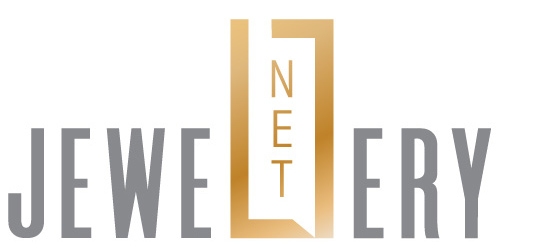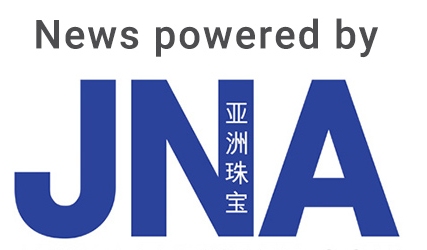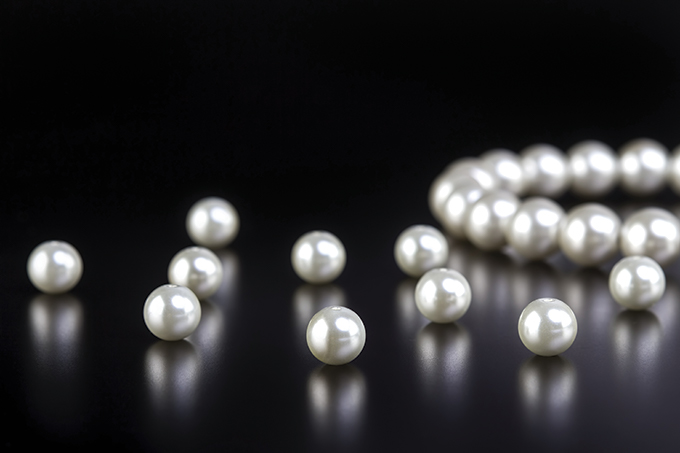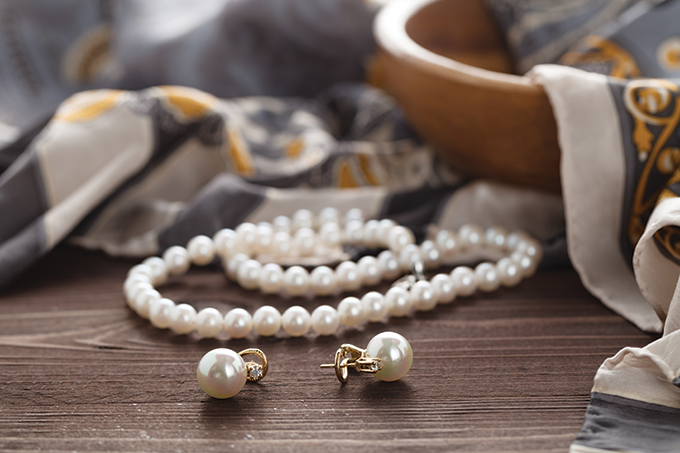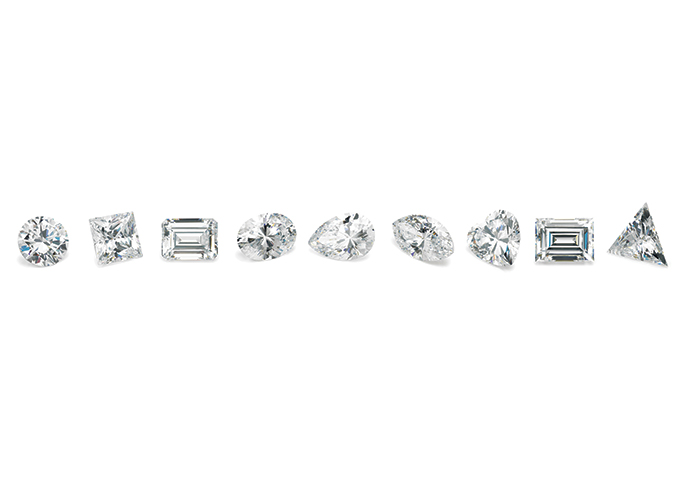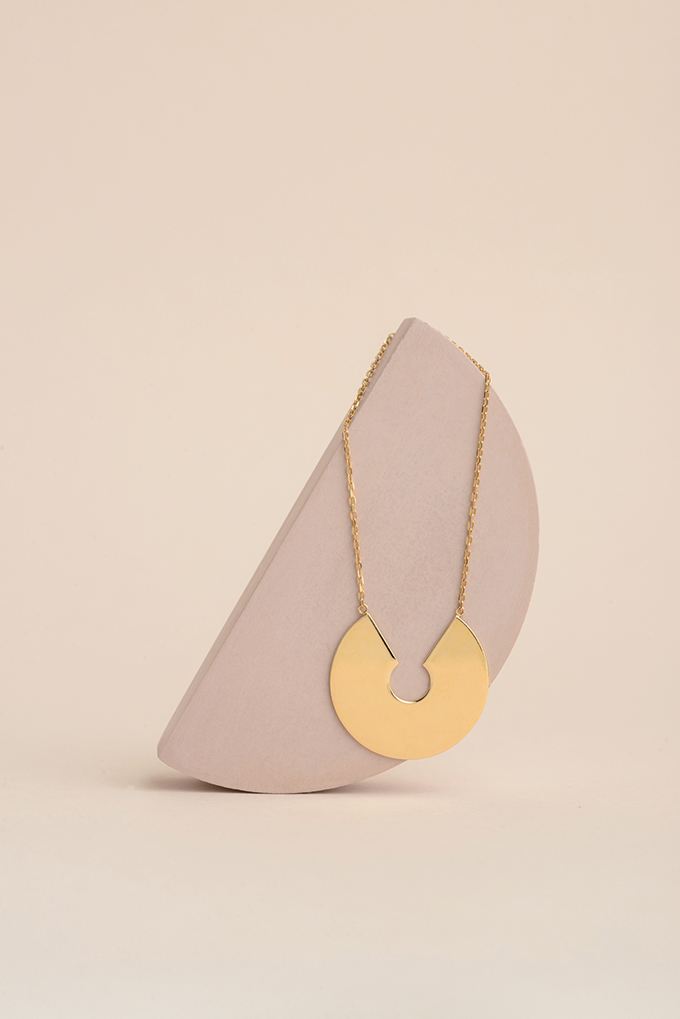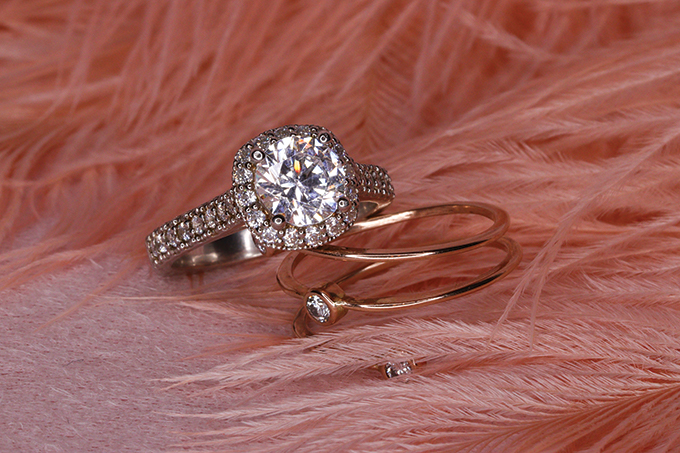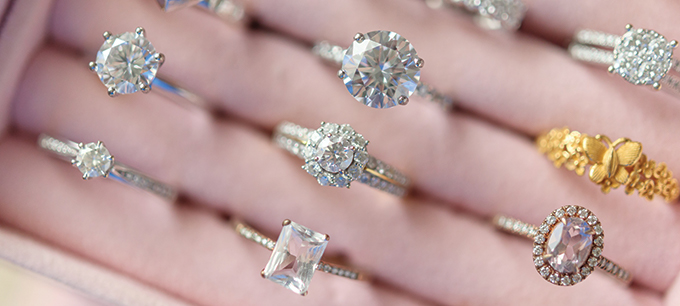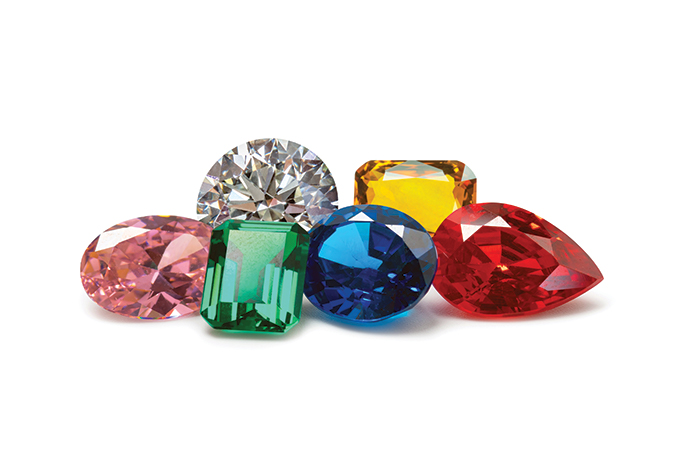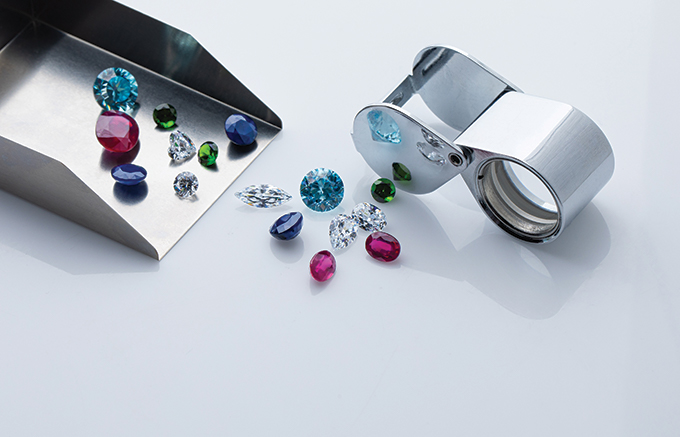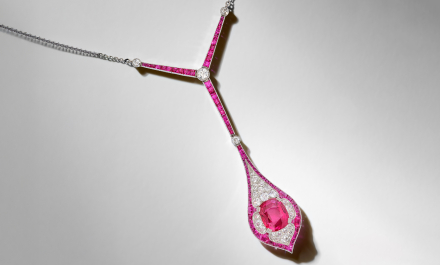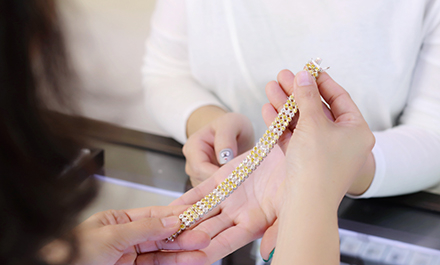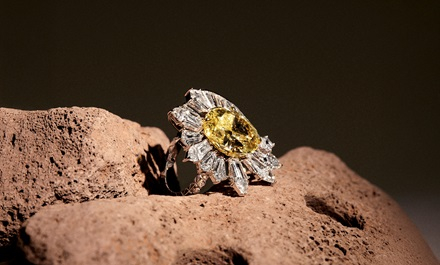Industry stakeholders adopt a more positive outlook in 2024, citing sparkling business prospects as demand strengthens and prices stabilise.
This article first appeared in the JNA January/February 2024 issue.
Coming from a particularly challenging year, the jewellery and gemstone industry is poised to witness positive multisectoral developments in 2024 amid ongoing uncertainties. Prices are expected to stabilise while a balanced demand and supply situation could be achieved as consumption levels normalise, or strengthen even, based on more upbeat prospects.
Technology and sustainability will continue to influence movements in the fine jewellery segment, with companies increasingly innovating their operations and business practices to meet the market’s evolving preferences.
The luxury sector could emerge a winner in the trade. According to jewellers and high-end diamond and gemstone dealers, demand for upper-range designer pieces and investment items will likely remain unabated, thanks to affluent buyers with high disposable incomes.
Global consultancy firm McKinsey & Co reaffirmed this observation. In its State of Fashion 2024 report, McKinsey said consumers’ discretionary spend will likely be intended for trusted brands and categories. Hard luxury goods, jewellery included, will benefit from this as buyers recognise their potential investment value during challenging times.
The market’s growing inclination towards colour and vivacity in their jewellery pieces, meanwhile, is expected to bode well for the coloured gemstone industry. Colours are believed to infuse sparkle and inspiration in people’s lives in the face of geopolitical and macroeconomic instability.
Buyers are likely to zero in on gemstones bearing warm and radiant tones of peach, with the Pantone Color Institute naming “Peach Fuzz” as 2024 colour of the year. A warm shade that emanates compassion, kindness and unity, and subdued elegance, Peach Fuzz also imparts a message of caring and sharing, community and collaboration, according to the institute.
Rose gold, amber or melo pearls as well as Padparadscha sapphires, morganites, fire opals, mandarin and spessartite garnets and peach moonstones, to name a few, are at the centre of fine jewellery design interpretations featuring Peach Fuzz.
The outlook is hopeful in the diamond sector, with the market expected to see improvements in January 2024. India’s decision to impose a two-month moratorium on diamond imports – from October 15 to December 15, 2023 – was instrumental in easing inventory buildup in the market. Mining giant De Beers, for its part, allowed Sightholders to defer rough diamond purchases to a later date.
This overall bullish sentiment extends to the fancy colour diamond and pearl segments, with industry players pointing to promising opportunities in the new year, owing to steady demand for premium-quality goods.
Beauty in luxury
According to the latest Bain & Co report, the global luxury market is projected to have reached €1.5 trillion (around US$1.6 trillion) in 2023, up 8 per cent to 10 per cent from 2022. This could set a record for the industry, further proving its unparalleled resilience, said the report, which Bain & Co conducted with Italian luxury goods manufacturers’ association Altagamma.
“Fuelled by an investment mindset, jewellery is set to reach €30 billion (nearly US$33 billion) in market value in 2023, with fine jewellery affirming itself as a bright spot for investments amid uncertainty,” the report stated.
Moving onwards to 2024, however, personal luxury goods, which include jewellery and watches, could record a softer performance owing to lingering uncertainties, achieving low-to-mid single-digit growth from 2023, noted Bain & Co.
Some industry players are more bullish about business prospects. Angela Yuen, managing director of high-end jeweller and gemstone dealer Wilds Co Ltd, expects solid sales of top-quality gems and jewellery in 2024 as buyers opt for vibrant colours in their jewellery choices.
She added, “People gravitate towards bright hues as an antidote to the prevailing negativity in the world. Jewellers and trendy collections are featuring more colourful items. Coloured gemstones are expected to perform strongly among other gem and jewellery categories in the coming years.”
A steady preference for luxury jewellery and gems, meanwhile, translates to increased demand for trusted gemmological services. Daniel Nyfeler, managing director at Gübelin Gem Lab, explained that this is in line with a long-term consumer trend favouring coloured gems and jewellery not only as a personal adornment but as an investment.
He remarked, “For many investors, gemstones have become an interesting vehicle to hold value in a highly mobile form. They are less dependent on the stability of currencies, markets and world economies, as well as intermediaries like banks, or regulators.”
Technology, sustainability and transparency
With the unprecedented rise of social media and technology, jewellery companies are faced with new challenges as well as opportunities to do business.
Yuki Leung, general manager of Lawrence Jewellery Co Ltd, said consumer choices could be highly influenced by social media, hence jewellers must stay abreast with the latest trends and opportunities afforded by new technology-based platforms.
Customers are also seeking more innovative and versatile designs while demanding transparency from jewellery manufacturers and gemstone dealers, noted Leung.
To foster greater transparency in the trade, the Responsible Jewellery Council (RJC) will come up with a lab-grown diamond standard – a first in the industry – in 2024, according to RJC Executive Director Melanie Grant.
Grant revealed, “It has been a huge amount of work for us. We are doing lots of consultations. Everyone should ideally have to measure themselves against a standard. Creators of lab-grown jewellery should adopt standards like everyone else, so we are excited to create that opportunity for people to all be on the same level playing field in terms of standards.”
The glitter of diamonds
The last quarter of 2023 was more promising for the diamond trade, after a prolonged period of soft demand.
According to Yoram Dvash, president of the World Federation of Diamond Bourses (WFDB), November 2023 saw a decrease in the global stock of polished diamonds and a strengthening of natural diamond prices. November is traditionally a strong month for diamonds.
India’s decision to freeze diamond imports for two months helped reduce diamond quantities in the market, added Dvash. “That is why we are seeing the beginning of a strengthening in prices. We are expecting that in January 2024, the market will continue to improve,” he explained.
At the 2023 CIBJO Congress in Jaipur last November, the first in-person Congress since the pandemic, Mahiar Borhanjoo, CEO of diamond data aggregator UNI Diamonds, said that the diamond industry is cyclical and price decreases were now flattening.
On the market slump, he said, “I blame Covid because there was pent-up demand and high sales, inventories got depleted, leading to short supply that further caused people to switch to other products. But that unusual demand is gone, partly because people feel less of a need to celebrate loved ones than they did at the height of the crisis.”
Smaller rough diamond Sights at De Beers could also help bolster the world diamond market in February and March 2024.
The impact of a Group of Seven (G7) consensus to restrict Russian diamond imports, meanwhile, remains to be seen. The move drew mixed reactions from the trade, with the World Diamond Council (WDC) and the WFDB saying they support the high-level decision pending further consultations while the Gem & Jewellery Export Promotion Council (GJEPC) said the G7 decision was not surprising although it “raises valid concerns” for the Indian gemstone and jewellery trade.
The ban on imports of non-industrial diamonds that are mined, processed or produced in Russia took effect on January 1, 2024. Further phased restrictions on Russian diamonds processed in third countries will be carried out on March 1, 2024.
Harsh Maheshwari, executive director at fancy colour diamond specialist Kunming, said the fancy colour diamond segment continues to enjoy a certain level of robust demand amid political and economic instability, owing to the goods’ rarity and limited supply. Prices, too, are generally stable.
Maheshwari noted, “The consumers that usually buy fancy colour diamonds already appreciate their uniqueness. And especially in a market like this, when people are so uncertain, there is generally a lot more who are looking to find something more unique and stable.”
Apart from perpetual favourites yellow, pink and blue diamonds, orange diamonds are gaining steam in the market, with the different shades of orange – bright, saturated, pumpkin or more neutral and pastel – resonating with today’s buyers.
Fancy colour diamonds are also viewed as an alternative investment and tangible asset, and this contributes to solid market demand, said Maheshwari.
Glowing opportunities
Gübelin Gem Lab’s Nyfeler said the rise in market demand brings a bigger challenge for gemmological laboratories. In particular, low-temperature heat treatments in rubies and pink sapphires are tricky to determine in certain cases. Also becoming more commonplace is oiling, not just of emeralds, but of rubies, spinels and Paraiba tourmalines. And this issue needs be addressed more strictly by gemmological labs.
Moving forward, an increasing number of wealthy consumers will probably invest in gemstones and jewellery for adornment or investment, he said. “There is a healthy future for those in our industry who are willing and capable to cater to this demand with top-quality goods that are transparently sourced and priced,” added Nyfeler.
Transparency and traceability will continue to be critical factors in the gem and jewellery industry. As such, rising demand for high-quality coloured gemstones and traceable gems alongside educated end-consumers are potential growth drivers in 2024.
For his part, Sean Gilbertson, CEO of ruby and emerald dealer Gemfields, said the coloured gemstone segment will remain relatively steady and in good shape, absent any market-moving disruptions such as Covid-19.
“Obviously, there are cost of living concerns and inflation, among others. But the coloured gemstone business has been experiencing phenomenal growth. In 2024, things should be just fine with a bit of luck,” said Gilbertson.
International Colored Gemstone Association (ICA) President Damien Cody shared this sentiment, adding that critical improvements in the trade such as seamless importation of gems post Covid-related disruptions as well as resumption of in-person jewellery exhibitions will bolster demand for coloured gems.
“The outlook for 2024 is for strong growth in the coloured gemstone segment. Mining production for some varieties is expected to increase. Pricing levels will settle, and inventories will need to be filled if retailers are to meet the anticipated increased demand brought about by improving economies,” Cody noted.
China’s recovery is a much-anticipated development in the trade as it used to account for a third of all luxury goods purchased globally pre-Covid. A protracted pandemic lockdown, however, impacted coloured gem imports into this market. Speaking at the 2023 CIBJO Congress, Cody noted, “As China recovers from its dormancy, we can expect that coloured gemstones will grow a bigger share of their luxury goods spend. At the top end of the market, we are seeing very strong demand and high prices.”
Pearl trade
Jonathan Cheng, director of Hong Kong-based Rio Pearl, said 2023 was an incredible year for the pearl industry as all pearl types across the board – freshwater, Tahitian and South Sea – saw a rise in value due to robust demand and limited supply. After many challenging years, it is only now that prices are reaching a level where producing pearls has become viable and pearlers have sufficient funds to further invest in improving the overall quality of their harvests, added Cheng.
As with coloured gemstones, China has become a critical market for the pearl sector, with clients consistently asking for high-quality pearls.
Cheng said this trend is expected to persist in 2024. He added, “With tighter supply from producers over the last few years, I see a continuation of strong growth in the pearl segment. Even amid tough times, our sector was able to grow in 2023. If the economy improves, we could see an even higher level of demand in 2024 for quality pearls.”
Environmental considerations alongside innovations in pearling processes will continue to be a significant part of Rio Pearl’s business strategies in 2024, continued Cheng.
While market sentiment for 2024 is generally optimistic, the gem and jewellery industry is not yet totally out of
the woods.
Discussions at the 2023 CIBJO Congress centred on challenges facing the trade moving forward. G7 sanctions on Russian diamonds, responsible sourcing, ESG, lab-grown diamonds, the impact of inflation and high interest rates on demand, and the viability of internationally recognised standards in the jewellery industry are but some areas of concern moving forward. Continued industry collaboration, cooperation and dialogue will thus be paramount to success.
